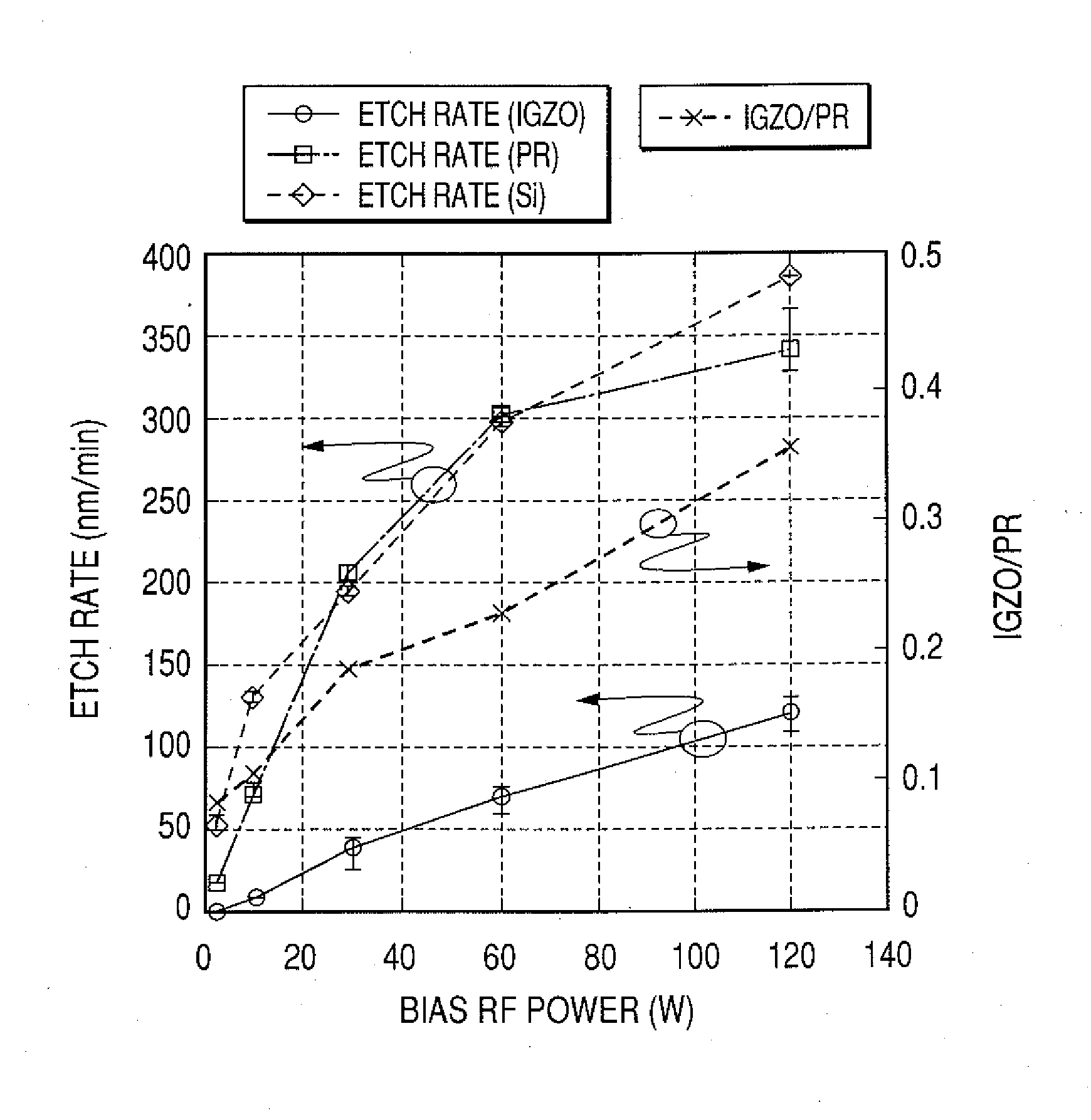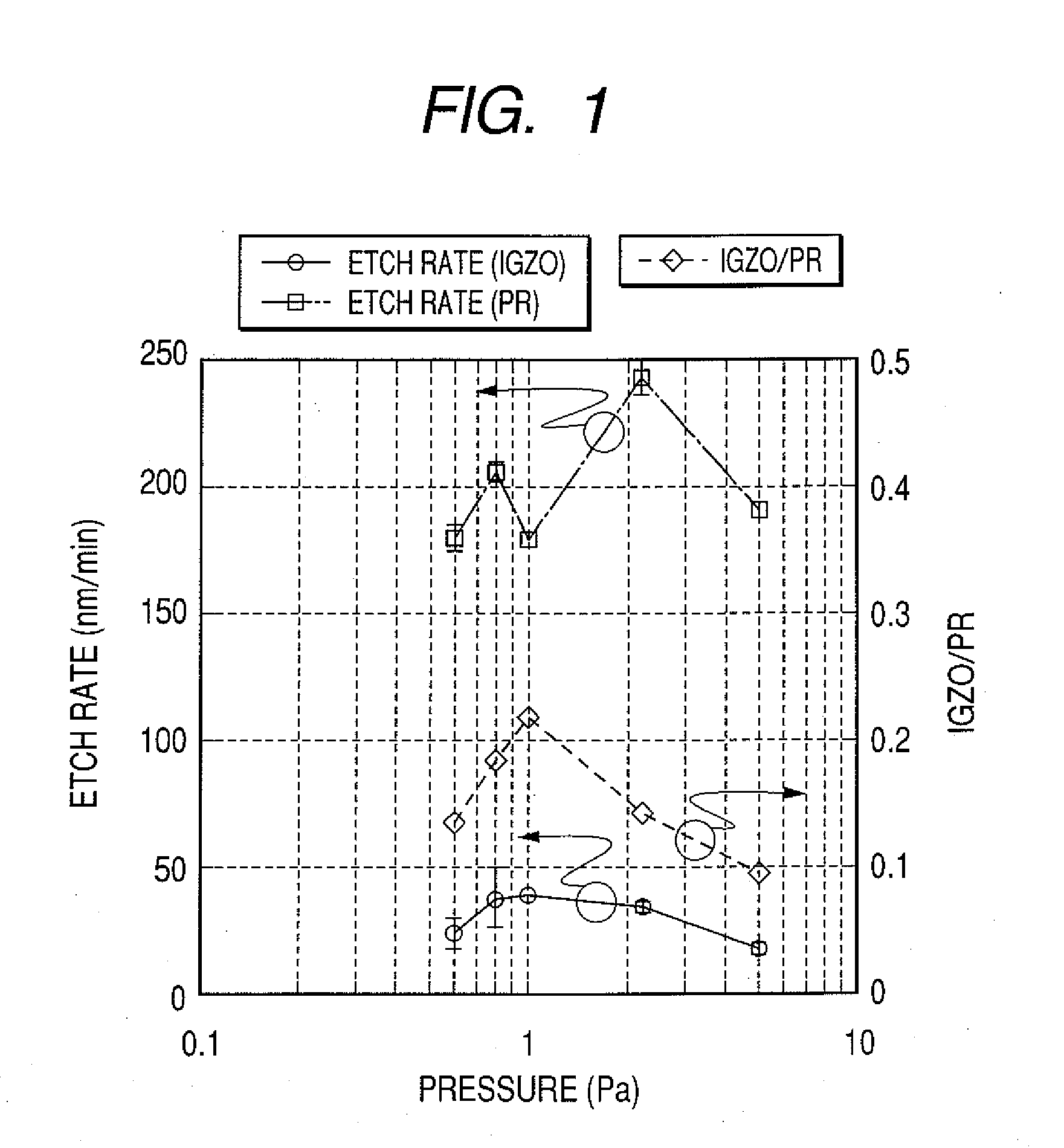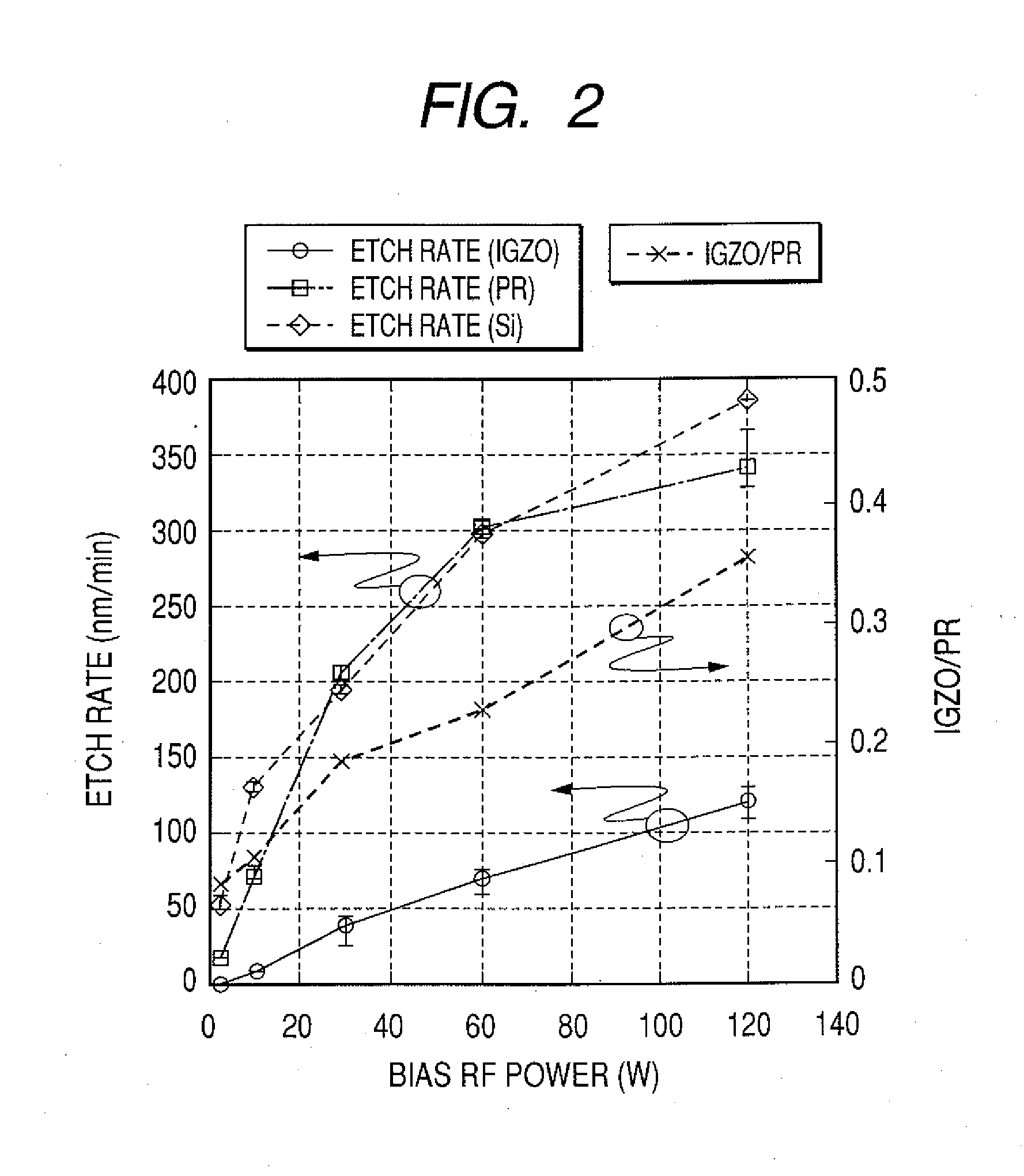Method of dry etching oxide semiconductor film
a technology of dry etching and oxide film, which is applied in the direction of semiconductor devices, decorative arts, photovoltaic energy generation, etc., can solve the problems of difficult to remove photoresist, low production yield, and high temperature melting and deformation of photoresist, and achieve high processing accuracy, high etch rate, and high processing accuracy
- Summary
- Abstract
- Description
- Claims
- Application Information
AI Technical Summary
Benefits of technology
Problems solved by technology
Method used
Image
Examples
examples
[0033]In the following description, specific examples of the dry etching method for the film containing In—Ga—Zn—O according to the present invention will be described. However, the present invention is not particularly limited to the examples.
[0034]First, a sample for an experiment was produced by a procedure described below. A Si substrate (thickness: 525 μm) having a Si oxide film with a thickness of 100 nm formed thereon was used as a base layer. Under the conditions as shown in Table 1, an In—Ga—Zn—O4 film having a thickness of 900 nm was formed by a reactive sputtering method.
TABLE 1TargetIn—Ga—Zn—O4SubstrateRoom TemperatureTemperature(60° C. or less)Ar flow rate50 sccmO2 flow rate0.6 sccmPressure0.326 PaRF power150 WTime40 minutesFilm Thickness900 nm
[0035]By the sputtering film forming method and by the use of a polycrystalline sintered body having an In—Ga—Zn—O4 composition as a target, an In—Ga—Zn—O-based amorphous oxide semiconductor thin film containing micro crystals was...
PUM
| Property | Measurement | Unit |
|---|---|---|
| Thickness | aaaaa | aaaaa |
| Thickness | aaaaa | aaaaa |
| Pressure | aaaaa | aaaaa |
Abstract
Description
Claims
Application Information
 Login to View More
Login to View More - R&D
- Intellectual Property
- Life Sciences
- Materials
- Tech Scout
- Unparalleled Data Quality
- Higher Quality Content
- 60% Fewer Hallucinations
Browse by: Latest US Patents, China's latest patents, Technical Efficacy Thesaurus, Application Domain, Technology Topic, Popular Technical Reports.
© 2025 PatSnap. All rights reserved.Legal|Privacy policy|Modern Slavery Act Transparency Statement|Sitemap|About US| Contact US: help@patsnap.com



